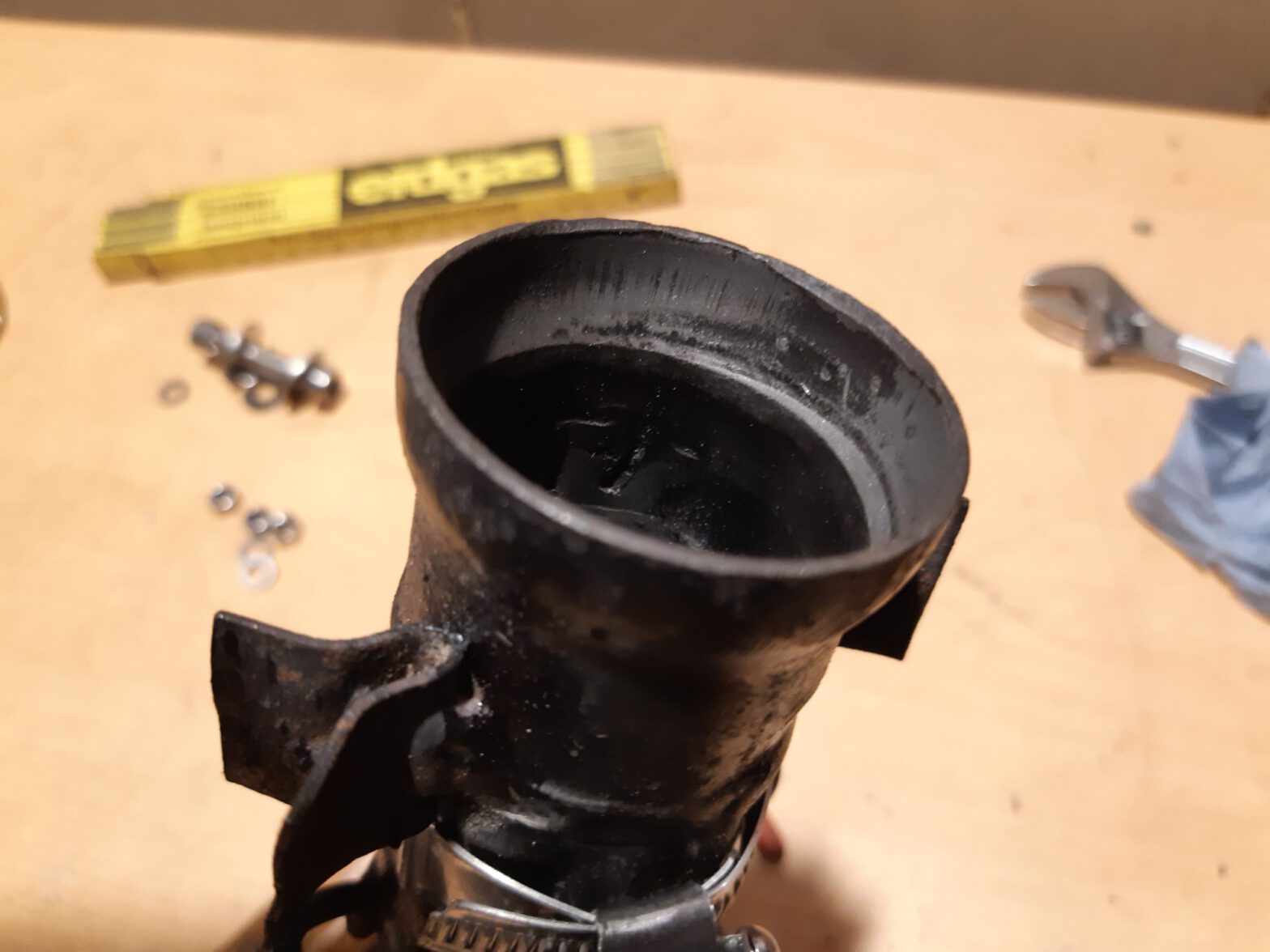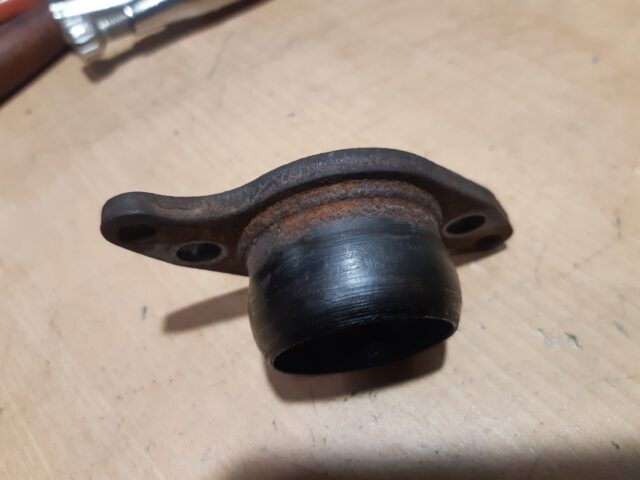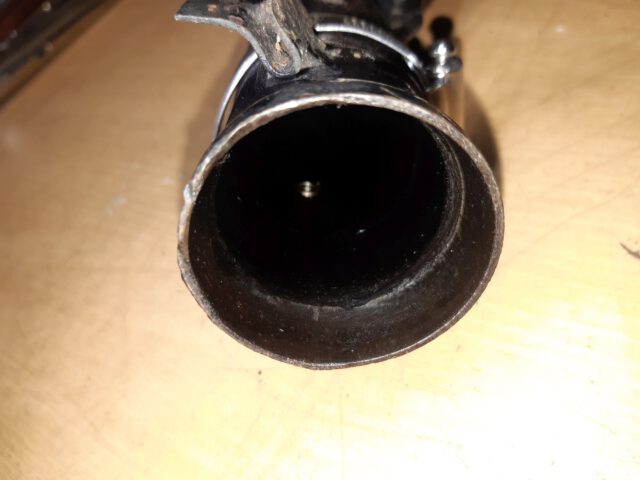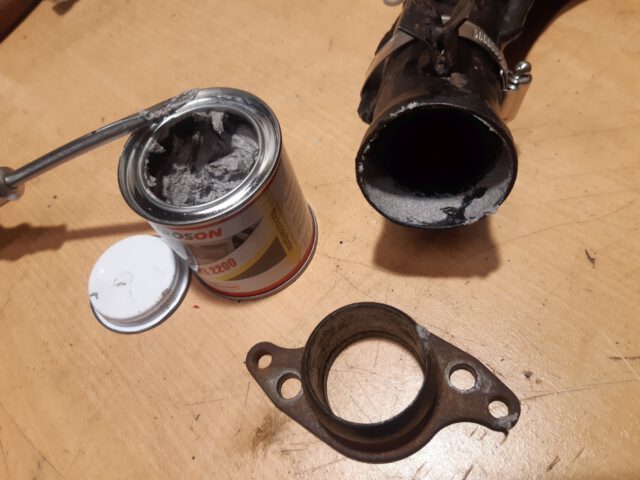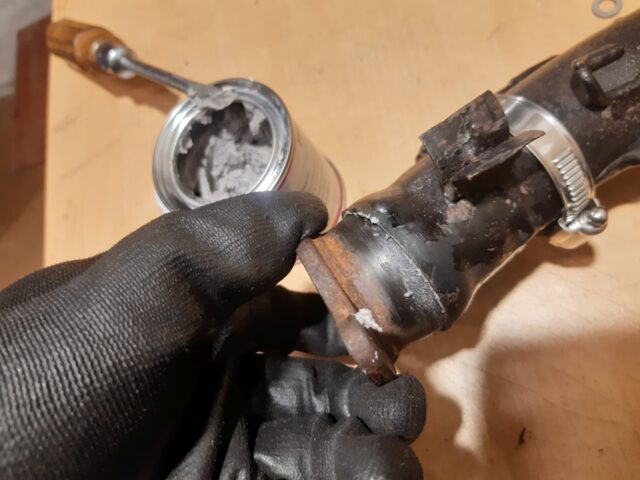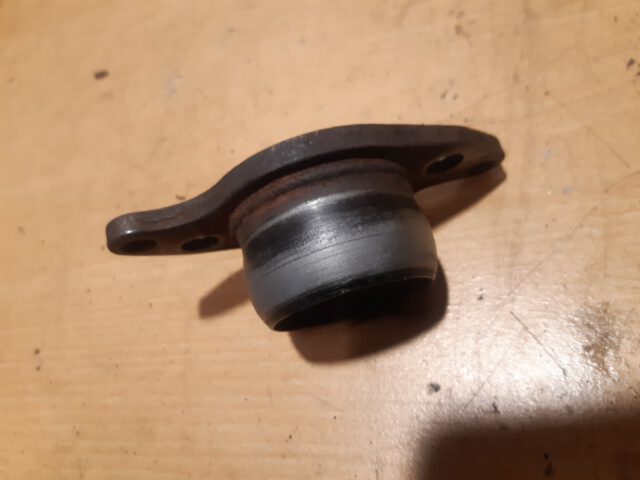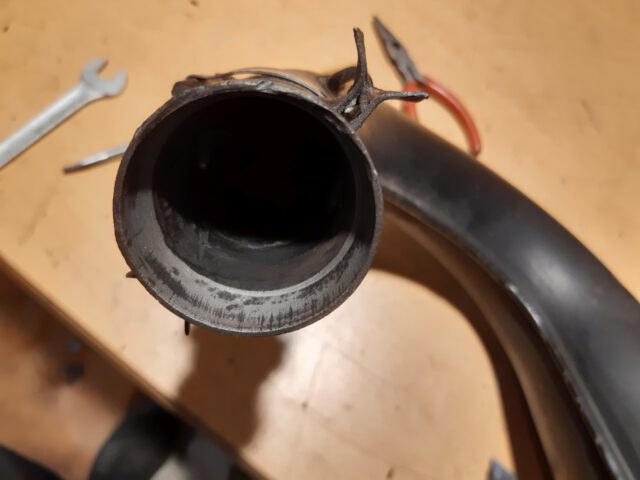A leaking exhaust flange leads to large parts of the engine and the inside of the fairing eventually becoming completely contaminated with black, tough oil and combustion residues. Especially with fully synthetic oils used as two stroke oils.
The (original) exhaust is pressed with two strong springs onto a spherical flange on which the exhaust is supposed to be metal to metal tight. Especially on old bikes this might not be the case anymore.
The exhaust gases at this point have temperatures of up to 700 °C and pulsate at different pressures, so that most of the sealing pastes burn or are forced out again.
With the use of valve grinding paste, the ball flange and exhaust manifold can be grinded back together again. This grinding paste is normally used to grind in valves in cylinder heads. You can get it in well-assorted car accessory shops or tool shops.
As with the grinding of valves, you also use pre- and post-grinding paste (of course in two steps one after the other…).
Coarse dents, e.g. if the manifold falls or is thrown around, should be worked out with a hammer to make the grinding work as easy as possible. Heavy dents cannot be compensated for by sanding alone. Combustion residues can be rubbed off with steel wool.
The paste is put into the manifold and onto the ball flange. The ball flange must be pressed evenly into the elbow in circular and tilting movements so that everything is sanded as evenly as possible.
You should grind the two parts with both pre-grinding and regrinding paste for about one minute. Remove the grinding paste as completely as possible after each grinding operation; particles of the pre-grinding paste should not get into the re-grinding paste.
The whole thing is finished when a continuous circle has been sanded both in the exhaust and on the ball flange, on which the two parts are then metal to metal sealed.
Unfortunately, this method does not work for aftermarket exhaust systems with cylindrical flange. Here, only special sealing paste (e.g. Hylomar EAP5) can be used, which should be distrubuted everywhere between the two cylinder surfaces.

